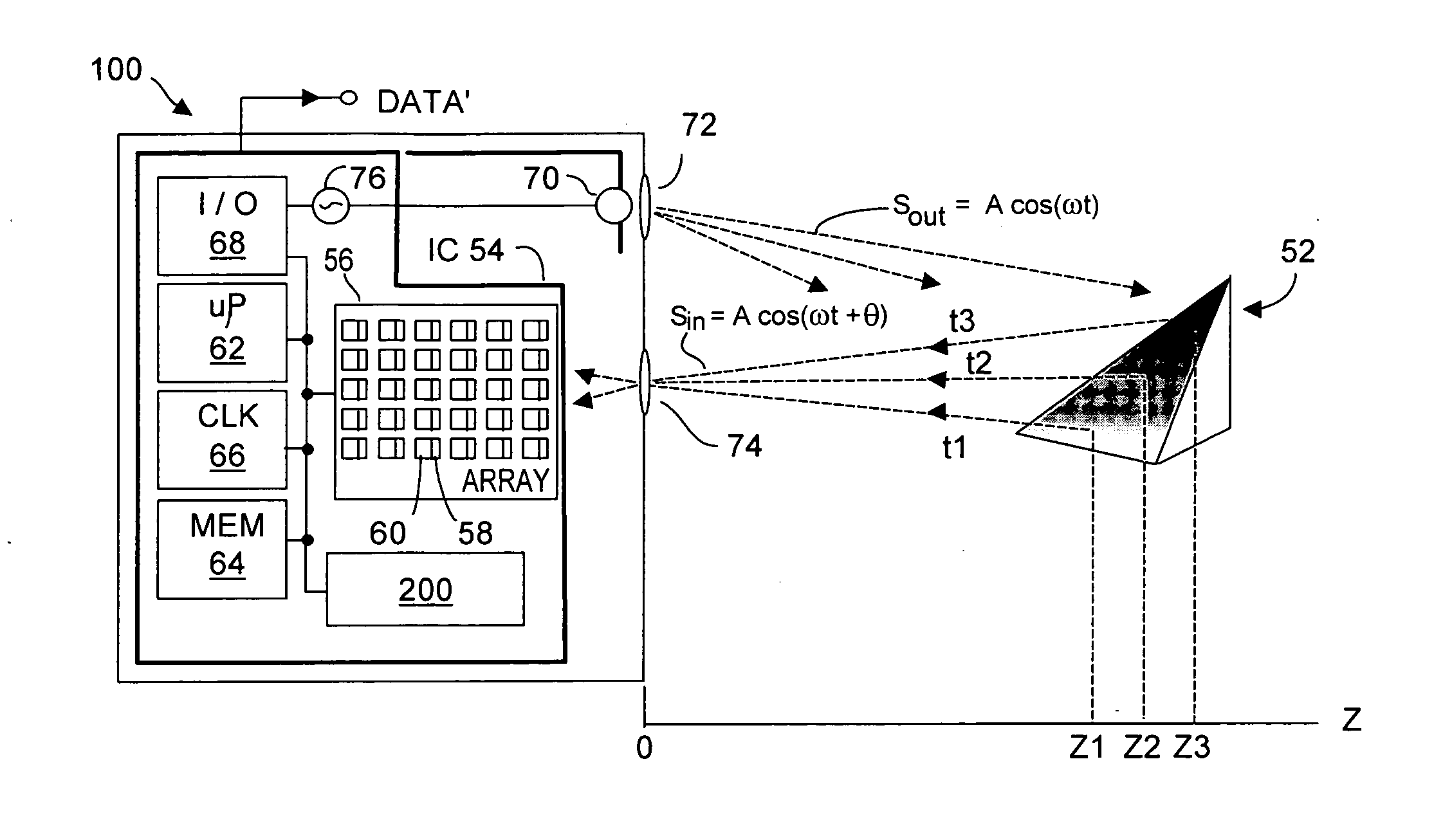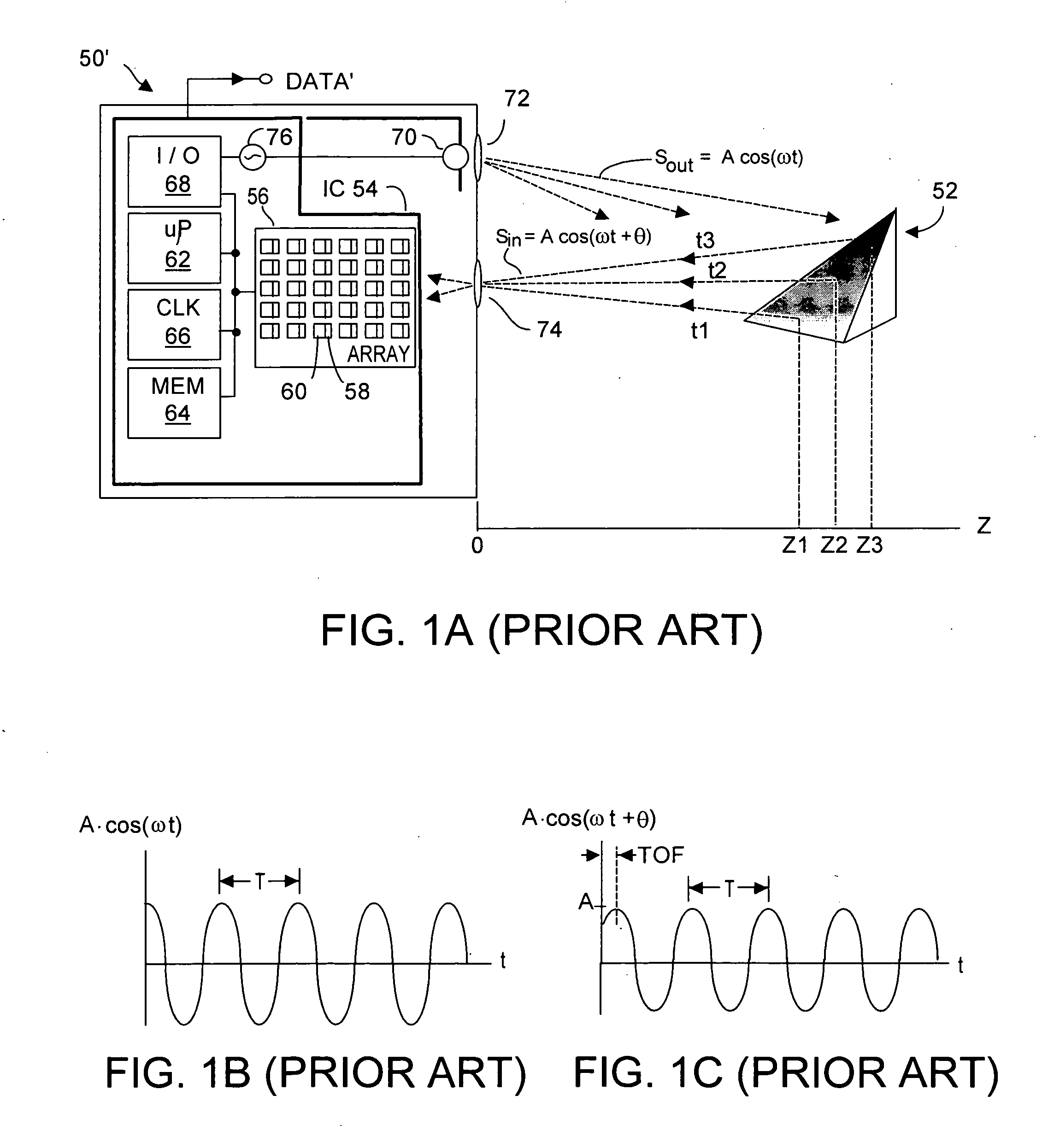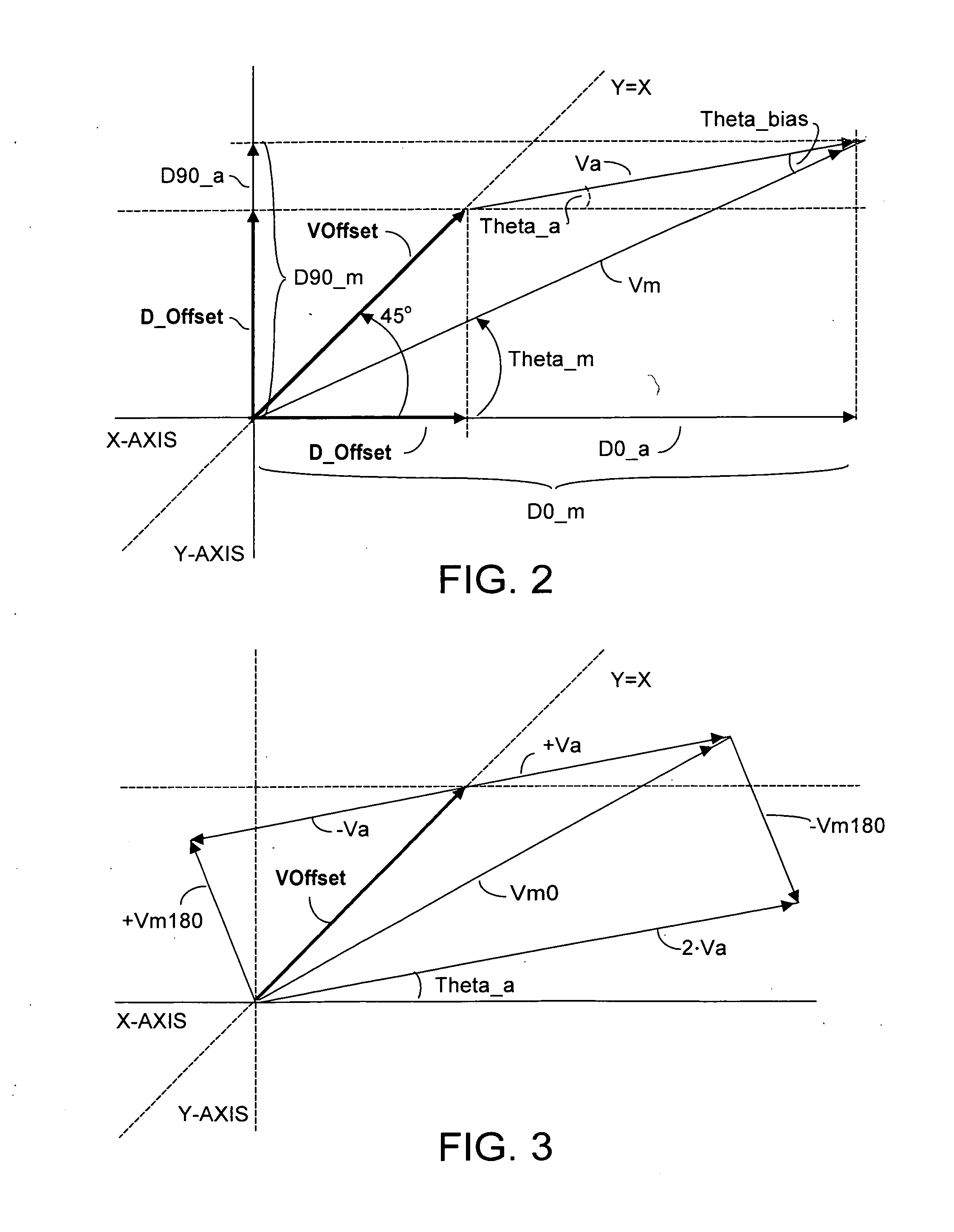Method and system to maximize space-time resolution in a Time-of-Flight (TOF) system
a time-of-flight and space-time resolution technology, applied in surveying, distance measurement, instruments, etc., can solve the problems of pixel array reporting, erroneous depth values, and erroneous depth values in tof systems, so as to reduce motion blur and reduce depth errors
- Summary
- Abstract
- Description
- Claims
- Application Information
AI Technical Summary
Benefits of technology
Problems solved by technology
Method used
Image
Examples
Embodiment Construction
[0039]It can be challenging in a phase-type time-of-flight (TOF) systems to intelligently combine multiple pixel values to provide accurate depth (Z) values so as to reduce mal-effects due to motion of the target object (motion blur), and due to spatial edges of the target object. Under some circumstances, spatially acquired pixel values should be combined, whereas under other circumstances, temporally acquired pixel values should be combined, where such circumstances may change dynamically. Complicating the problem of intelligently combining pixel values is the fact that different pixels in the TOF system pixel array have different offsets. Thus, embodiments of the present invention preferably intelligently determine not only how best to combine pixel values, but also determine how best to compensate for individual pixel offsets.
[0040]As noted, phase-type time of flight (TOF) systems can exhibit error due to the system integrating acquired pixel detection signals (values) to form a...
PUM
 Login to View More
Login to View More Abstract
Description
Claims
Application Information
 Login to View More
Login to View More - R&D
- Intellectual Property
- Life Sciences
- Materials
- Tech Scout
- Unparalleled Data Quality
- Higher Quality Content
- 60% Fewer Hallucinations
Browse by: Latest US Patents, China's latest patents, Technical Efficacy Thesaurus, Application Domain, Technology Topic, Popular Technical Reports.
© 2025 PatSnap. All rights reserved.Legal|Privacy policy|Modern Slavery Act Transparency Statement|Sitemap|About US| Contact US: help@patsnap.com



